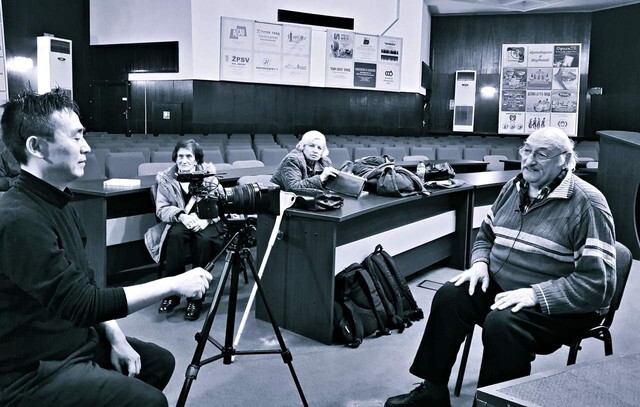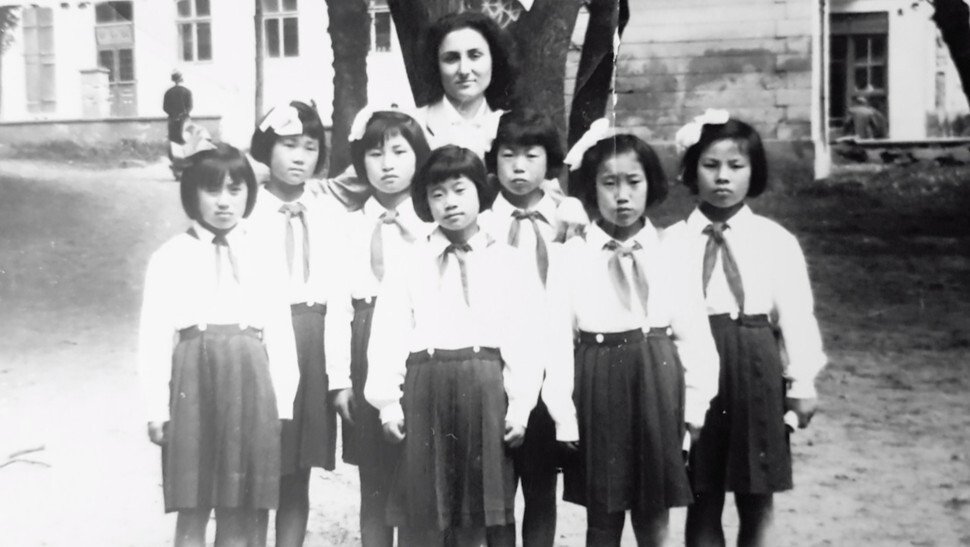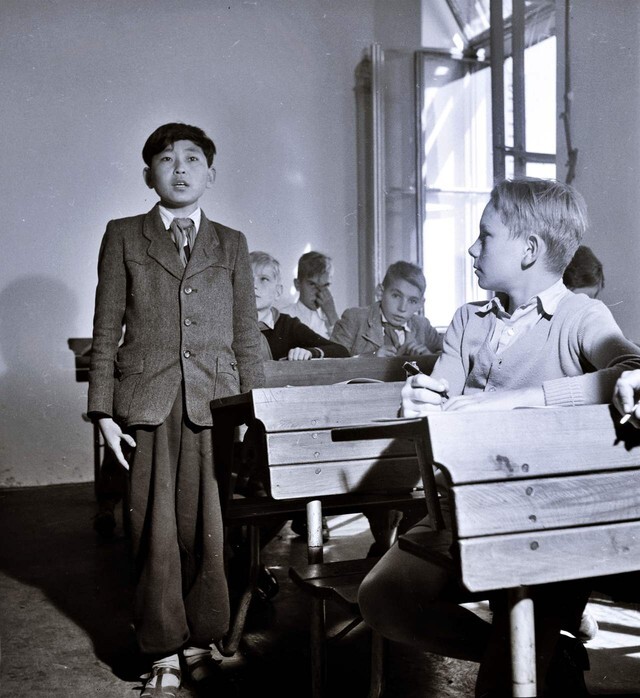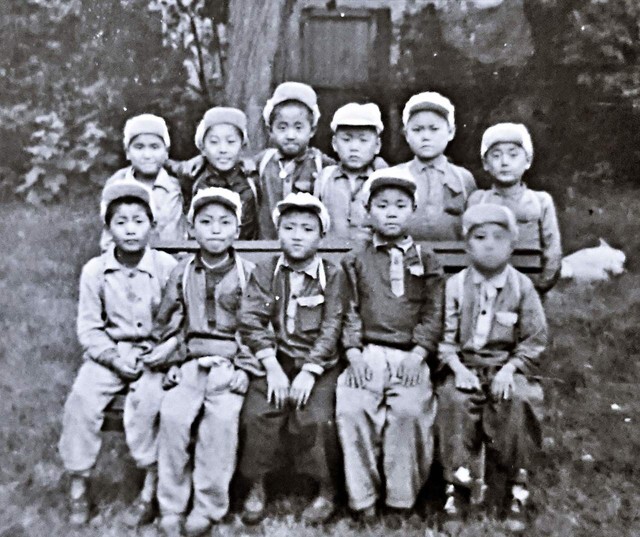hankyoreh
Links to other country sites 다른 나라 사이트 링크
[Interview] Remembering “Kim Il-Sung’s children”

One day in 2004, Kim Deog-young got a phone call from Park Chan-wook, a fellow film director and an old college friend.
Park told Kim that, during a trip to Eastern Europe, he’d heard about an old woman in Romania who’d been waiting for her North Korean husband to return for more than 40 years.
Kim, an independent producer who was working on a television documentary, found that story hard to believe. Even so, he flew to Romania.
The story went like this. A hundred thousand children were orphaned during the Korean War. South Korea sent its orphans to the US and Western Europe for adoption, while North Korea sent its orphans to the socialist countries of Eastern Europe to receive an education.

Georgeta Mircioiu, who was 20 years old in the early 1950s, was one of the teachers put in charge of the North Korean children sent to Romania. She fell in love with Cho Jung-ho, a North Korean teacher who’d accompanied the children. Overcoming numerous obstacles, they were married in 1957 and had a daughter, but the two were permanently separated when Cho was forced to return to North Korea just a few years later.
“Georgeta’s story is important in and of itself, but that’s also how I learned about the issue of North Korea’s war orphans,” Kim told the Hankyoreh during a recent interview in a café in Seoul’s Yeongdeungpo District.
“While in Romania, I stumbled upon documents and footage related to her story. While we were watching the footage together, tears came to Georgeta’s eyes, and she told me the names of the children one by one. That’s when I perceived just how amazing this historical episode is. Even after the show was broadcast, I made up my mind to keep digging into it.”
Kim’s documentary was broadcast that June on KBS under the title, “Wednesday Feature: Mircioiu’s Husband Is Cho Jung-ho.” It was a huge hit.
Afterward, Kim continued to receive leads about North Korea’s war orphans, but the demands of his job kept him too busy to pursue them. But they kept weighing on him, and in 2010, he posted the materials he’d collected on a blog. He’d hoped that someone would carry on the work in his place, but no one got in touch with him.
In 2018, Kim learned that some unsavory incidents had occurred while Koreans were researching the history of North Korean war orphans in Eastern Europe — apparently the researchers had tricked some of the locals. “The people there are so innocent and trusting that it really pissed me off. That’s why I made up my mind to do the work myself,” he recalled.
So Kim set up folders on his computer corresponding to each country — Romania, Poland, Czechoslovakia, Hungary, and Bulgaria — and began gathering material in earnest. He’d collected official records for 5,000 children sent to Eastern Europe, but he believed there’d actually been 10,000.

Early last year, Kim traveled to Eastern Europe to begin filming. When he saw Mircioiu again, after 15 years had passed, she was still living in the same place, still waiting for her husband, still ignorant of his fate. She still hadn’t taken off her wedding ring, engraved with the words “Jung-ho 1957,” even though it pressed into her swollen fingers.

While Kim was interviewing seven Bulgarians who said they’d been friends with the North Korean children, one old man suddenly broke into a song in Korean that Kim had never heard before. When the first stanza was over, the old women in the group carried on with the second verse. Kim soon learned that this was the “Song of General Kim Il-sung,” which is sung in North Korea more often than the national anthem.
“You can imagine how often those children must have sung that song for those Bulgarians to remember it all these years later. They told me that the children would get up every morning at 6:30 am and go out to the sports field, where they would salute a North Korean flag engraved with the face of Kim Il-sung and then sing that song. In effect, Kim Il-sung’s cult of personality got started in the early 1950s,” Kim Deog-young said.
“If we’re serious about unification, we need to face up to the fact that the cult of personality is still going strong in North Korea 70 years later, even though Kim Il-sung’s grandson is in power now.”

In 1956, the North Korean government started repatriating the children, earlier than planned. There were a number of factors behind Kim Il-sung’s decision to bring the children back and bar the door behind them. Domestically, there was an attempted coup that August by hostile factions. And in the middle of an anti-Soviet rebellion in Hungary, two North Korean children in Poland were apprehended while attempting to escape into Austria.
“North Korea scattered the children around the country, regarding them as a potential threat. What happened to them afterwards was kept secret,” the director explained.
The children’s story is told in the documentary film “Kim Il-sung’s Children,” which Kim Deog-young produced with 150 million won (US$123,203) out of his own pocket. This documentary serves as a highly valuable record of his research in Eastern Europe. “Kim Il-sung’s Children” stands in contrast with a 2018 documentary about the North Korean orphans called “The Children Gone to Poland,” in which the director, actress Chu Sang-mi, took a more emotional, story-driven approach.
Film’s festival debut postponed due to COVID-19; Kim hopes for theater release in June, anniversary of Korean War
“Kim Il-sung’s Children” was officially entered in the competition category at the Nice International Film Festival, in France. The festival was originally scheduled for May, but it has been delayed because of the coronavirus pandemic. The film also received an invitation from the Pyeongchang International Peace Film Festival, which is scheduled for June.
Kim hopes to have his film released in theaters in June, since June 25th will mark the 70th anniversary of the Korean War. A book of the same title “Kim Il-sung’s Children” is supposed to be released that same month.
By Suh Jung-min, music correspondent
Please direct comments or questions to [english@hani.co.kr]

Editorial・opinion
![[Editorial] Does Yoon think the Korean public is wrong? [Editorial] Does Yoon think the Korean public is wrong?](https://flexible.img.hani.co.kr/flexible/normal/500/300/imgdb/original/2024/0417/8517133419684774.jpg) [Editorial] Does Yoon think the Korean public is wrong?
[Editorial] Does Yoon think the Korean public is wrong?![[Editorial] As it bolsters its alliance with US, Japan must be accountable for past [Editorial] As it bolsters its alliance with US, Japan must be accountable for past](https://flexible.img.hani.co.kr/flexible/normal/500/300/imgdb/original/2024/0417/6817133413968321.jpg) [Editorial] As it bolsters its alliance with US, Japan must be accountable for past
[Editorial] As it bolsters its alliance with US, Japan must be accountable for past- [Guest essay] Amending the Constitution is Yoon’s key to leaving office in public’s good graces
- [Editorial] 10 years on, lessons of Sewol tragedy must never be forgotten
- [Column] A death blow to Korea’s prosecutor politics
- [Correspondent’s column] The US and the end of Japanese pacifism
- [Guest essay] How Korea turned its trainee doctors into monsters
- [Guest essay] As someone who helped forge Seoul-Moscow ties, their status today troubles me
- [Editorial] Koreans sent a loud and clear message to Yoon
- [Column] In Korea’s midterm elections, it’s time for accountability
Most viewed articles
- 1[Column] The clock is ticking for Korea’s first lady
- 2Samsung barricades office as unionized workers strike for better conditions
- 3[Editorial] When the choice is kids or career, Korea will never overcome birth rate woes
- 4[News analysis] After elections, prosecutorial reform will likely make legislative agenda
- 5S. Korea, Japan reaffirm commitment to strengthening trilateral ties with US
- 6Japan officially says compensation of Korean forced laborers isn’t its responsibility
- 7Why Israel isn’t hitting Iran with immediate retaliation
- 8[Editorial] Does Yoon think the Korean public is wrong?
- 9[Guest essay] How Korea turned its trainee doctors into monsters
- 10[Guest essay] Amending the Constitution is Yoon’s key to leaving office in public’s good graces